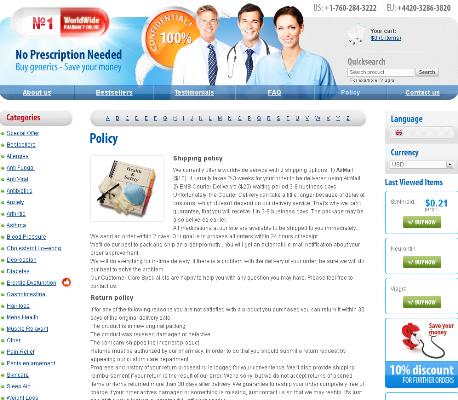Robaxin in Sports Injury Recovery: Facts and Myths
Understanding Robaxin: What Is It Really For?
Robaxin is a brand name for methocarbamol, a muscle relaxant widely used in medical settings. Unlike painkillers that work directly on nerves, Robaxin targets the central nervous system to reduce muscle spasms and discomfort. Physicians typically prescribe it for acute musculoskeletal conditions, such as strains, sprains, or muscle injuries.
Its primary role is not to boost athletic performance or speed up healing, but to ease the uncomfortable symptoms that often follow an injury. This can be particularly valuable for athletes grappling with tightness or spasms as part of their recovery.
Robaxin is usually used alongside other treatments, including physical therapy and rest, to support the overall healing process. It’s important to understand the appropriate situations when this medication offers benefits.
| Key Uses | Not Intended For |
|---|---|
| Muscle spasm relief | Long-term pain management |
| Acute muscle injuries | Directly healing injuries |
How Robaxin Works on Sports-related Muscle Injuries

When athletes experience muscle strains or spasms, discomfort can halt their progress. Robaxin, a muscle relaxant, enters the scene to target involuntary muscle tightness. By acting on the central nervous system, it helps ease spasms without directly affecting muscle strength. This support enables athletes to participate in physical therapy with less pain and better mobility. Ultimately, robaxin assists in breaking the pain-spasm cycle, creating a smoother path to effective rehabilitation and quicker recovery.
Separating Fact from Fiction: Robaxin’s Effectiveness
While many athletes assume Robaxin is a miracle cure for muscle injuries, the reality is more nuanced. Robaxin (methocarbamol) is a muscle relaxant designed to ease muscle spasms and discomfort, but it doesn’t repair tissue or directly speed up healing. Its main benefit lies in promoting comfort during recovery and helping injured athletes rest easier.
Despite its frequent prescription, scientific evidence supporting Robaxin’s effectiveness in speeding sports injury recovery is limited. Most studies show that it helps manage symptoms, not the underlying injury. Therefore, while Robaxin can play a valuable role in a comprehensive treatment plan, it shouldn’t be viewed as a standalone solution.
Common Myths about Robaxin in Athletic Recovery

Athletes often turn to Robaxin hoping for rapid muscle recovery, believing it's a magic bullet for sports injuries. However, this perception doesn’t reflect clinical reality. Robaxin’s primary purpose is to alleviate muscle spasms through its central muscle relaxant action—it doesn’t directly speed up tissue healing. A persistent myth is that Robaxin enhances athletic performance or prevents recurrent injuries, which is unsupported by scientific evidence and not recommended by experts.
Another misconception is that Robaxin has minimal side effects and can be used freely during athletic training. In truth, its sedative properties might impair coordination and reaction time, posing risks for active individuals. Education about Robaxin helps athletes understand that while it can ease discomfort, it’s not a standalone solution for sports recovery and should only supplement a comprehensive rehabilitation plan.
Potential Side Effects and Considerations for Athletes
For athletes considering Robaxin as part of their rehabilitation, understanding its side effects is crucial. Common reactions include drowsiness, dizziness, and stomach upset, which can compromise training reliability and safety. Athletes must remain alert to any signs of impaired coordination, as these may hinder performance or elevate the risk of further injury.
Robaxin can also interact with other medications or supplements, potentially affecting athletic recovery outcomes. It is important to consult a healthcare provider to ensure there are no risky combinations. Athletes should also be mindful of hydration and overall liver health, as these factors play a role in how Robaxin is metabolized and tolerated.
| Possible Side Effects | Impact on Athletes |
|---|---|
| Drowsiness | Reduces alertness, may affect game safety |
| Dizziness | May impair coordination, increasing injury risk |
| Stomach Upset | Can limit participation in training |
Expert Tips for Safe Robaxin Use in Recovery
When incorporating Robaxin into a sports injury recovery plan, collaboration with a healthcare professional is crucial. Athletes should never self-prescribe or alter dosages without medical guidance, as individual needs and underlying health conditions vary widely. Clear communication about all medications and supplements is vital to avoid potential interactions. It’s recommended to keep a log of usage, side effects, and any progress to facilitate more precise adjustments during follow-ups.
Proper timing is also key—Robaxin may be most effective when combined with physical therapy and rest, not as a standalone remedy. Staying hydrated and monitoring for drowsiness or impaired coordination can help athletes remain safe during recovery. Ultimately, prioritizing overall rehabilitation and gradual return to activity lays a solid foundation for both healing and long-term performance.

